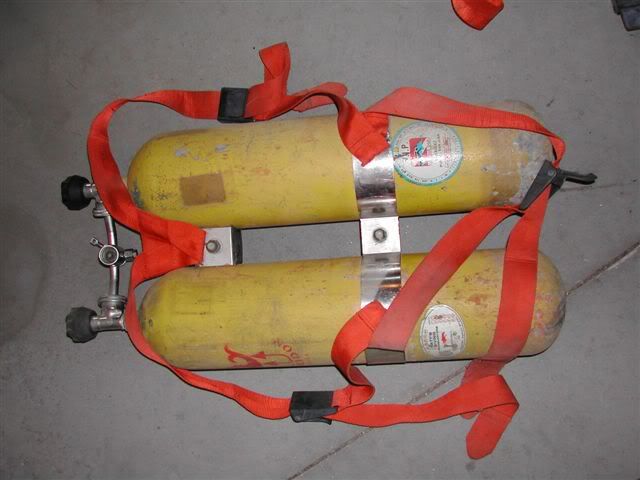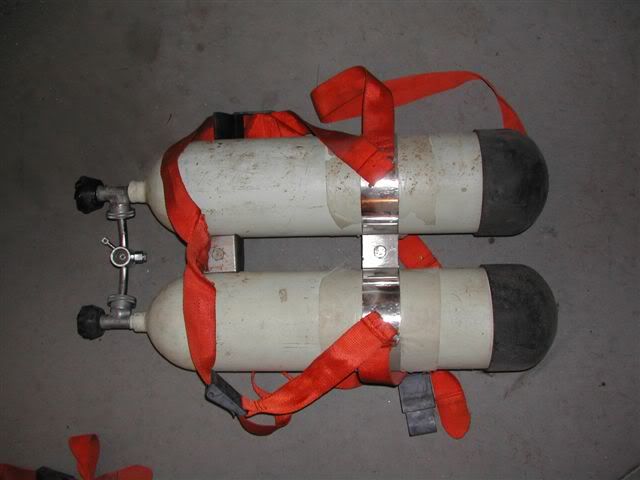Point taken about being a bit off topic.
Another example that is more on topic: My X7-100's hold about 12 liters each.
I can find this by converting the volume of the full tanks to liters then dividing by the fill pressur ein bar to get the volume of the tank at 1 bar.
The rated fill pressure is 3442 psi which is 237 bar (1 bar = 14.5 psi)
1 cu ft = 28.3 liters, 100 cu ft = 2830 liters
2830/237=11.94 liters
So once you know your tanks volume, you can figure out what you have at greater bars. At 50 bar you have 12 liters times 50 bar which equals 600 liters, at 200 bar you'd have 2400 liters.
The "advantage" with this system is that it makes the math fairly easy when looking at your SPG and trying to figure out how much gas you actually have in the tank. Of course that assumes you have an SPG marked in bars since converting from psi to bar, but the complication right back into the problem.
Since most divers in the US do not have spg's that are marked in bar, there is no real advantage to knowing the capacity of the tank in liters.
All is not lost however. To do the same thing in psi, you create a "tank factor" for the tank. For the X7-100 that is 2.9. You find that by taking the 100 cu ft it holds when full divided by the pressure in psi (3442) times 100. (100/3442)*100= 2.9052 2.9 then is the number of cu ft per 100 psi. In other words, if your tank has 100 psi in it, it currently has 2.9 cu ft of gas in it.
So if you have 500 psi you have 5 times 2.9 cu ft, which is roughly 15 cu ft. 14.5 cu ft if you are good with math in your head and 15, if you are not (3x5=15). If you have 2000 psi you have 20 times 2.9 cu ft or 58 cu ft (20X3=60 if you are again not good with math in your head.)
So either way with the metric system and an SPG in bar and a tank in liters, or in the imperial system with an SPG in psi and a tank factor it is failry easy to figure the capacity remaining in your tank with fairly simple math.
Now obviously if you are math challenged, you will probably round the tank factor to "3". If you then still stuggle with things like multiplying 3X5, 3X10 or 3X15 in your head, you may have sufferred brain damage from breathing air out of those new fangled aluminum tanks and may want to consider another sport.
Personally, I think the tank factor approach is even easier than the metric system unless you are diving with a 10 liter tank. That said, an AL 80 is 10.6 liters, so it is reasonably close to being a 10 liter tank.
Another example that is more on topic: My X7-100's hold about 12 liters each.
I can find this by converting the volume of the full tanks to liters then dividing by the fill pressur ein bar to get the volume of the tank at 1 bar.
The rated fill pressure is 3442 psi which is 237 bar (1 bar = 14.5 psi)
1 cu ft = 28.3 liters, 100 cu ft = 2830 liters
2830/237=11.94 liters
So once you know your tanks volume, you can figure out what you have at greater bars. At 50 bar you have 12 liters times 50 bar which equals 600 liters, at 200 bar you'd have 2400 liters.
The "advantage" with this system is that it makes the math fairly easy when looking at your SPG and trying to figure out how much gas you actually have in the tank. Of course that assumes you have an SPG marked in bars since converting from psi to bar, but the complication right back into the problem.
Since most divers in the US do not have spg's that are marked in bar, there is no real advantage to knowing the capacity of the tank in liters.
All is not lost however. To do the same thing in psi, you create a "tank factor" for the tank. For the X7-100 that is 2.9. You find that by taking the 100 cu ft it holds when full divided by the pressure in psi (3442) times 100. (100/3442)*100= 2.9052 2.9 then is the number of cu ft per 100 psi. In other words, if your tank has 100 psi in it, it currently has 2.9 cu ft of gas in it.
So if you have 500 psi you have 5 times 2.9 cu ft, which is roughly 15 cu ft. 14.5 cu ft if you are good with math in your head and 15, if you are not (3x5=15). If you have 2000 psi you have 20 times 2.9 cu ft or 58 cu ft (20X3=60 if you are again not good with math in your head.)
So either way with the metric system and an SPG in bar and a tank in liters, or in the imperial system with an SPG in psi and a tank factor it is failry easy to figure the capacity remaining in your tank with fairly simple math.
Now obviously if you are math challenged, you will probably round the tank factor to "3". If you then still stuggle with things like multiplying 3X5, 3X10 or 3X15 in your head, you may have sufferred brain damage from breathing air out of those new fangled aluminum tanks and may want to consider another sport.
Personally, I think the tank factor approach is even easier than the metric system unless you are diving with a 10 liter tank. That said, an AL 80 is 10.6 liters, so it is reasonably close to being a 10 liter tank.







